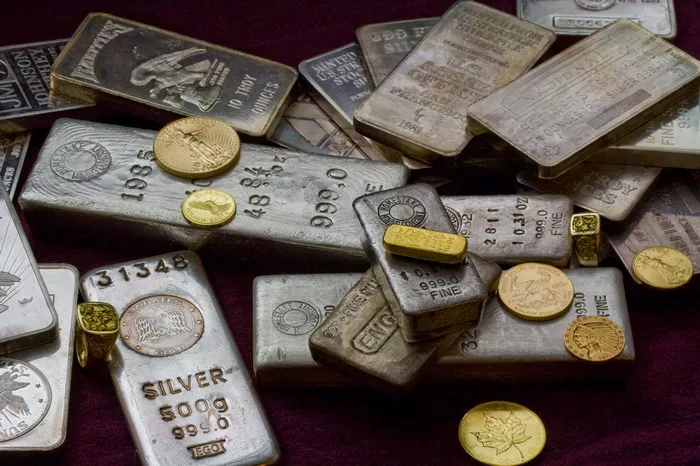In recent times, the decline in precious metal prices has been a topic of significant concern and discussion among investors, economists, and financial analysts. Precious metals, including gold, silver, platinum, and palladium, have long been considered safe-haven assets and store of value in times of economic uncertainty. However, various factors have contributed to the downward trend in their prices. Understanding these factors is crucial for investors seeking to navigate the complex dynamics of the precious metals market.
1. Economic Recovery and Risk Appetite
One of the primary drivers behind the fall in precious metal prices is the global economic recovery following the COVID-19 pandemic. As economies reopen and vaccination efforts progress, investor sentiment has become increasingly optimistic about the prospects of economic growth. This optimism has led to a shift in risk appetite, with investors moving away from safe-haven assets like gold and silver towards riskier assets such as equities and cryptocurrencies.
The improving economic outlook has reduced the need for investors to hedge against uncertainty, diminishing the appeal of precious metals as a safe haven. As a result, demand for these assets has weakened, putting downward pressure on prices.
2. Strengthening US Dollar
The value of precious metals is closely linked to the performance of the US dollar. As the world’s reserve currency, movements in the value of the dollar often have a significant impact on commodity prices. In recent months, the US dollar has strengthened against other major currencies due to several factors, including expectations of higher interest rates by the Federal Reserve and the relative strength of the US economy compared to other regions.
A stronger dollar makes precious metals more expensive for holders of other currencies, reducing their demand and putting downward pressure on prices. Additionally, a robust dollar diminishes the appeal of alternative stores of value, further dampening demand for precious metals.
3. Inflation Expectations and Monetary Policy
Inflation expectations play a crucial role in determining the value of precious metals. Historically, gold and other precious metals have served as a hedge against inflation, as their intrinsic value tends to preserve wealth in times of rising prices. However, the relationship between inflation and precious metal prices is complex and influenced by various factors, including monetary policy decisions by central banks.
In response to the economic impact of the pandemic, central banks around the world implemented unprecedented monetary stimulus measures, including near-zero interest rates and large-scale asset purchase programs. While these measures initially raised concerns about inflationary pressures, central banks have signaled their commitment to maintaining accommodative monetary policies to support economic recovery.
As a result, expectations of sustained low inflation have reduced the appeal of precious metals as an inflation hedge, leading to a decline in demand and prices.
4. Technical Factors and Speculative Trading
In addition to fundamental factors, technical aspects of the precious metals market and speculative trading can also influence price movements. Precious metal prices are often subject to short-term fluctuations driven by factors such as technical indicators, market sentiment, and speculative trading activities.
For example, large institutional investors and hedge funds may engage in short-term trading strategies based on technical analysis or market momentum, leading to periods of price volatility. Furthermore, the prevalence of leveraged trading instruments such as futures and options can amplify price movements in both directions.
During periods of declining prices, speculative traders may exacerbate selling pressure by unwinding their positions or initiating short sales, further driving prices downward. However, it’s important to note that while speculative trading can contribute to short-term volatility, it may not necessarily reflect underlying changes in supply and demand fundamentals.
5. Supply and Demand Dynamics
Supply and demand dynamics play a fundamental role in determining the long-term trajectory of precious metal prices. While factors such as economic conditions, inflation expectations, and currency movements influence short-term price fluctuations, supply and demand fundamentals ultimately dictate the equilibrium price over the long term.
On the supply side, precious metals are mined from the earth and refined into marketable products. The cost of production, technological advancements, and regulatory factors can affect the supply of precious metals. Additionally, recycling and secondary sources contribute to overall supply levels.
Demand for precious metals stems from various sectors, including jewelry, electronics, investment, and industrial applications. Changes in consumer preferences, technological innovations, and macroeconomic conditions can influence demand dynamics. For example, the growing adoption of renewable energy technologies like solar panels has increased demand for silver, which is used in photovoltaic cells.
In recent years, increased environmental regulations and operational challenges have constrained the supply of precious metals, while shifting consumer preferences and technological advancements have altered demand dynamics. These supply and demand imbalances can contribute to price volatility in the short term but tend to stabilize over the long term as market participants adjust to new conditions.
Conclusion
In conclusion, the decline in precious metal prices can be attributed to a combination of factors, including the economic recovery, strengthening US dollar, inflation expectations, technical factors, and supply and demand dynamics. While short-term price fluctuations may present challenges for investors, understanding the underlying drivers of these movements is essential for making informed investment decisions.
Investors should carefully monitor economic indicators, central bank policies, geopolitical developments, and market sentiment to gauge the outlook for precious metals. Additionally, diversification and risk management strategies can help mitigate the impact of price volatility and preserve capital in uncertain market environments.
While the current environment may present challenges for precious metal investors, the long-term value proposition of these assets as stores of wealth and portfolio diversifiers remains intact. By staying informed and disciplined in their approach, investors can navigate the complexities of the precious metals market and position themselves for long-term success.


